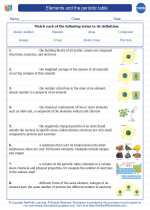South Pole
The South Pole is the southernmost point on the Earth's surface. It is located at a latitude of 90 degrees south, and is the point where the Earth's axis of rotation intersects its surface.
Geography and Climate
The South Pole is located on the continent of Antarctica, which is primarily covered by ice. The climate at the South Pole is extremely cold, with temperatures often dropping below -50°C. The region experiences long periods of darkness in the winter and long periods of daylight in the summer due to its location within the Antarctic Circle.
Scientific Research
The South Pole is an important location for scientific research due to its unique geographic and climatic conditions. Research stations, such as the Amundsen-Scott South Pole Station, are established to conduct studies in fields such as glaciology, meteorology, astronomy, and physics.
Exploration and Expeditions
The exploration of the South Pole has a rich history, with notable expeditions by explorers such as Roald Amundsen and Robert Falcon Scott in the early 20th century. These expeditions were significant milestones in the exploration of the Antarctic continent.
Study Guide
- Describe the geographic location of the South Pole.
- Explain the climate conditions at the South Pole.
- Discuss the importance of the South Pole for scientific research.
- Identify notable explorers and expeditions associated with the South Pole.
- Compare and contrast the North Pole and the South Pole.
These study guide questions can help you understand the geographic, climatic, scientific, and historical aspects of the South Pole.
.◂Chemistry Worksheets and Study Guides High School. Elements and the periodic table

 Worksheet/Answer key
Worksheet/Answer key
 Worksheet/Answer key
Worksheet/Answer key
 Vocabulary/Answer key
Vocabulary/Answer key
 Vocabulary/Answer key
Vocabulary/Answer key
 Vocabulary/Answer key
Vocabulary/Answer key
